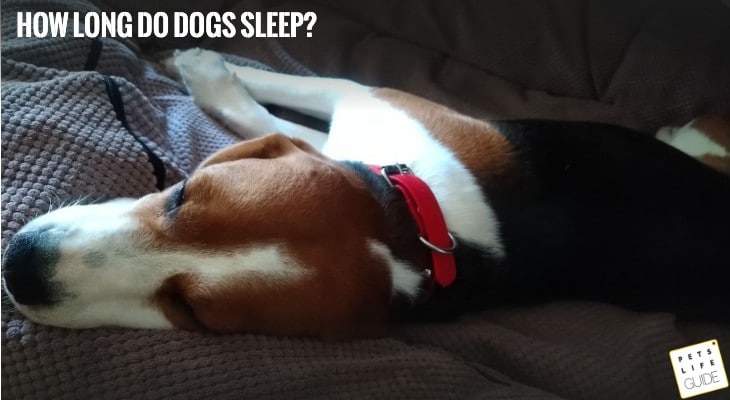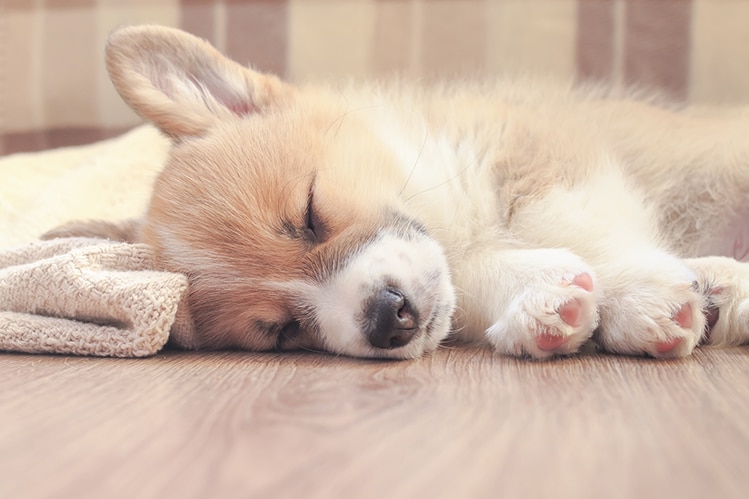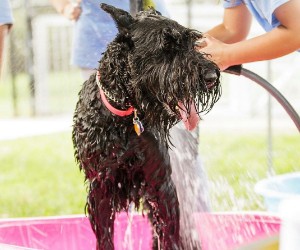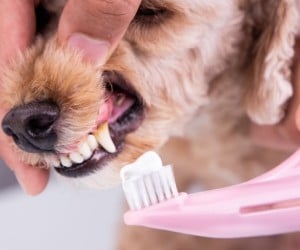Table of Contents
How Much Sleep Does a Dog Need?
First of all, let’s note that the amount of sleep is individual for each pet. Just like humans. After all, some of us, after six hours of sleep, spend the whole day yawning, and some of us are awake and in a great mood. But there are still sleep standards for pets of different ages that all caring owners need to be aware of.
Dog Age / Hours of Sleep Ratio
Puppies are growing and exploring the world and they need a lot of energy. A little puppy can be exhausted and fall asleep right where he was playing just a minute ago.
- Puppies under 4 months need up to 20 hours of sleep a day to have the courage to embark on new adventures. It’s worth noting that at under three months of age, puppies will sleep through bright lights and noise (like the TV on), but don’t overdo it; puppies need plenty of rest. If such a puppy suddenly woke up and whimpered, it’s almost certainly because he’s hungry – small pups have a very fast metabolism.
- At 4 to 5 months of age, puppies get enough sleep for up to 18 hours a day. Their sleep becomes responsive and the puppy can wake up to loud music or the ringing of the phone.
- From 6 months of age he should sleep as much as an adult.
- On average, an adult dog needs 14-16 hours of sleep. Cheerfulness and well-being are the main signs that the pet is getting enough sleep.
How many hours per night does a senior dog sleep, starting at age five or seven, depending on his breed? About the same as a puppy.
Metabolism slows down, so he needs more rest to get the right amount of energy. An older pet’s sleep is very sensitive, with harsh smells, touches, light and noise preventing the four-legged friend from getting a good night’s sleep. It is often at an older age that the dog sleeps after a walk and a good meal.
Sleep Duration Factors
Breed Size
Dogs of large and miniature breeds have different needs for sleep and rest. While Mini Schnauzers may get 12-14 hours of sleep per day, Sheepdogs and Rottweilers require 15-18 hours of rest. Smaller dogs bodies metabolic processes go faster and cells that have recovered soon produce energy again. But bigger breeds need regular exercise to maintain muscular tone, so they need more time to recuperate. Larger dogs sleep more soundly than their smaller cousins, and a Labrador won’t be awakened by the sound of voices or bright lights.
External Sounds, Weather Conditions
But other factors can affect sleep time and quality. External stimuli like a noisy party in your home with bright lights, a thunderstorm outside your window, or a repair job next door. Weather conditions also affect how long dogs sleep. When it’s cold and dreary the four-legged friend prefers to snooze on his bed. In summer heat, pets rest on the floor to cool off or an elevated dog bed with good ventilation and try to move around less.
Stress and Psychological Disorders
There are also less obvious reasons that can prevent a pet from getting a good night’s sleep. Stress, psychological problems can keep your dog awake. This is a common cause of insomnia in dogs that have experienced mistreatment, having negative experiences with people. Health problems also disrupt your pet’s sleep. If your puppy has a chronic medical condition, it’s important to make a visit to veterinarian, follow all the prescriptions of a specialist, and arrange a comfortable place at home for your dog to sleep and rest. If a dog at the age of 3 to 7 years, in the prime of his life, suffers from insomnia or sleeps excessively, take him to the vet.
Following Human Schedule
Another thing pets can do in their sleep and rest patterns is to mimic their owner’s schedule. If you like to take an afternoon nap, don’t be surprised if your pet follows you. Companion dogs easily pick up on their owners’ habits. That’s not the case with hunting breeds. They’re used to their own schedule and don’t respond well to days when they can’t get the rest they’re used to.
Comfort Matters
It’s not just the length of time, but also the quality of your pet’s sleep that matters. Remember not to disturb the dog while he rests, you can pet your four-legged friend later, during a walk or a game. Choose a big enough and comfortable bed for your pet. Put it in a quiet place where he won’t be disturbed, away from drafts and direct sunlight. Some pets sleep best when their bed is next to their owner. Give your pet a blanket or plaid to snuggle up in if it gets chilly at night.
You may also like: How to Clean a Dog Bed Properly
Phases of Dog Sleep
A comfortable environment is important so that your pet’s sleep is not interrupted and the phases of deep and fast sleep alternate sequentially. First, your pet sinks into a doze, resting, but still in control of what’s going on around him. Dozing turns into shallow sleep, in which the nervous system becomes less active and the muscles relax. When the dog sleeps after a walk, it is exactly shallow sleep.
Shallow sleep turns into deep sleep, which gives full rest to all of the pet’s body systems. The dog does not react to external stimuli, may slightly move its paws in sleep. Next comes the phase of rapid sleep, it is characterized by sharp movements of the pupils under the closed eyelids. Fast sleep is responsible for dreams. Fast sleep may turn into a shallow sleep and end with awakening, or it may change back to a deep sleep phase.
If your dog whines in his sleep, kicking his legs, don’t wake him up thinking he’s having a nightmare. A dog in his sleep can re-experience a fun game or an interesting walk. A natural awakening will be better for the pet in any case. We wish your pets always sleep soundly and be ready for new games and adventures every day!
You may also like: Best Dog Crates, Kennels & Pet Carriers







Leave a Reply